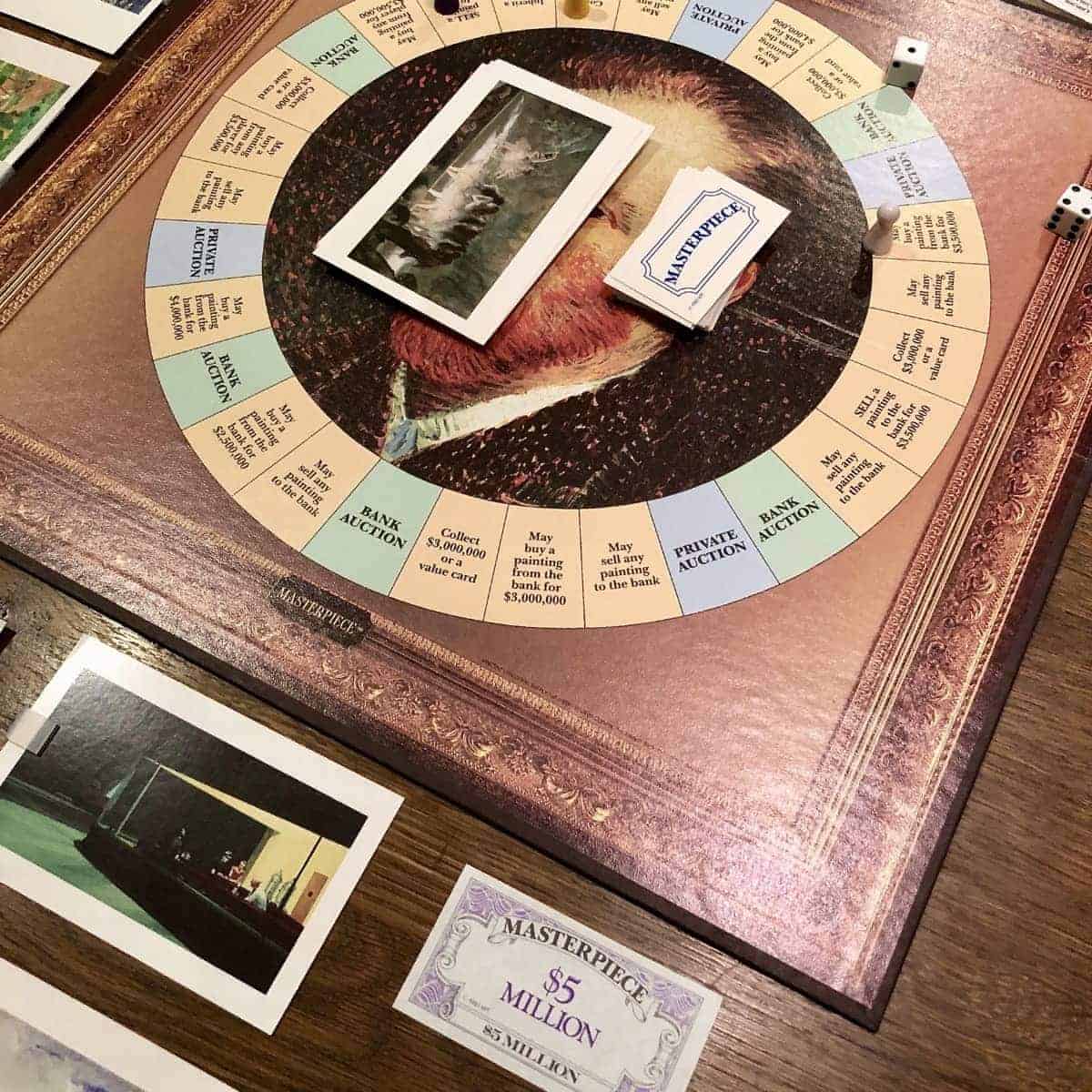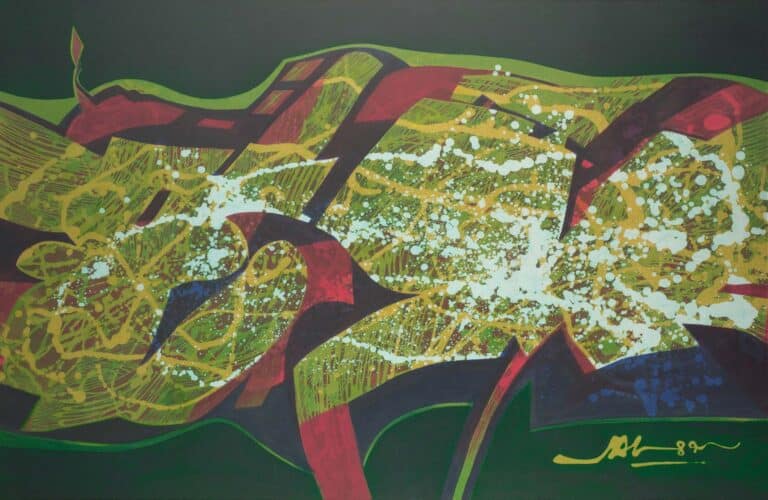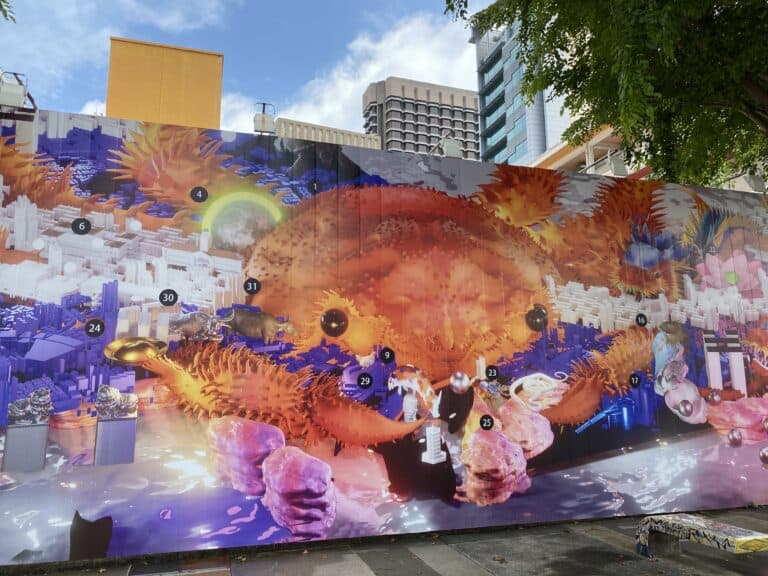Watching the vegetable seeds that you’ve sown grow isn’t exactly a riveting pastime, there are only so many sourdough loaves your long-suffering family can consume and you’ve ramped up your TV binge-watching rate to such record-setting levels that the various streaming platforms can no longer keep up with the demands of your voracious viewing appetite. So what’s an art-lover to do in the remaining three weeks of lockdown here in Singapore? Fear not, Plural pals, we’re here to rescue you from your lockdown lethargy with some cool art games that will help take your mind off the constant flow of anxiety-provoking news and engage and entertain you and your family in isolation and beyond.
1. Masterpiece: The Art Auction Game
First up is an oldie but goodie – the classic 1970s Parker Brothers’ board game, Masterpiece: The Art Auction Game, where you get to pretend you’re a wealthy art collector (you start with a tidy $15 million in your kitty to splurge on art!) – check out the original, deliciously retro ad for the game here:
Rembrandts, Monets, Van Goghs and more – all are on the auction block, for sale to the highest bidder. Each player tries to amass the greatest fortune (in cash and artwork value) and there are various interesting and quirky collector profiles to choose from. Unfortunately, unlike the more contemporary role-playing board games out there, the characters aren’t differentiated in any way in terms of how the game is played. Since they have no impact at all on the game, it all seems rather irrelevant and, when I played it with friends and family, we dispensed with them altogether! I guess, if you wanted to add some extra fun, you could get everyone to role-play as their character and dress and act the part throughout the game.

Masterpiece is otherwise beautifully realised, with a luxe-looking game board, Monopoly-like play money, reproductions of famous art works for you to collect and value cards which determine how much your art collection is worth. Each player draws one painting card at the start and one value card, which he or she clips to the painting and, with a roll of the dice, players move their tokens around the board. The directions on the space that you land on determine, in part, your fate in the game – that comes down to sheer luck. The rest, however, depends on your powers of observation (keeping track of who bid what for which artwork, for example), your ability to bluff (when the artwork you hold is actually a forgery or worth less than the other players think) and your appetite for risk (how high will you bid before the tension and excitement gets to you?).
My friends and I had great fun playing this game and would rate it 7/10! Its components are well-made and attractive, the rules are clear, easy to learn and fairly intuitive (I hate wasting time poring over rule books when playing a new game, don’t you?) and it requires just the right balance of luck and strategy to keep game-play exciting. If you’d enjoy being part of the glamorous world of international art collectors and the high-stake power plays of art auctions, Masterpiece is the game for you! Although the game is out of print (there were several editions produced after the original 1970s one), I managed to get mine easily from Amazon a few years ago and it’s still available.
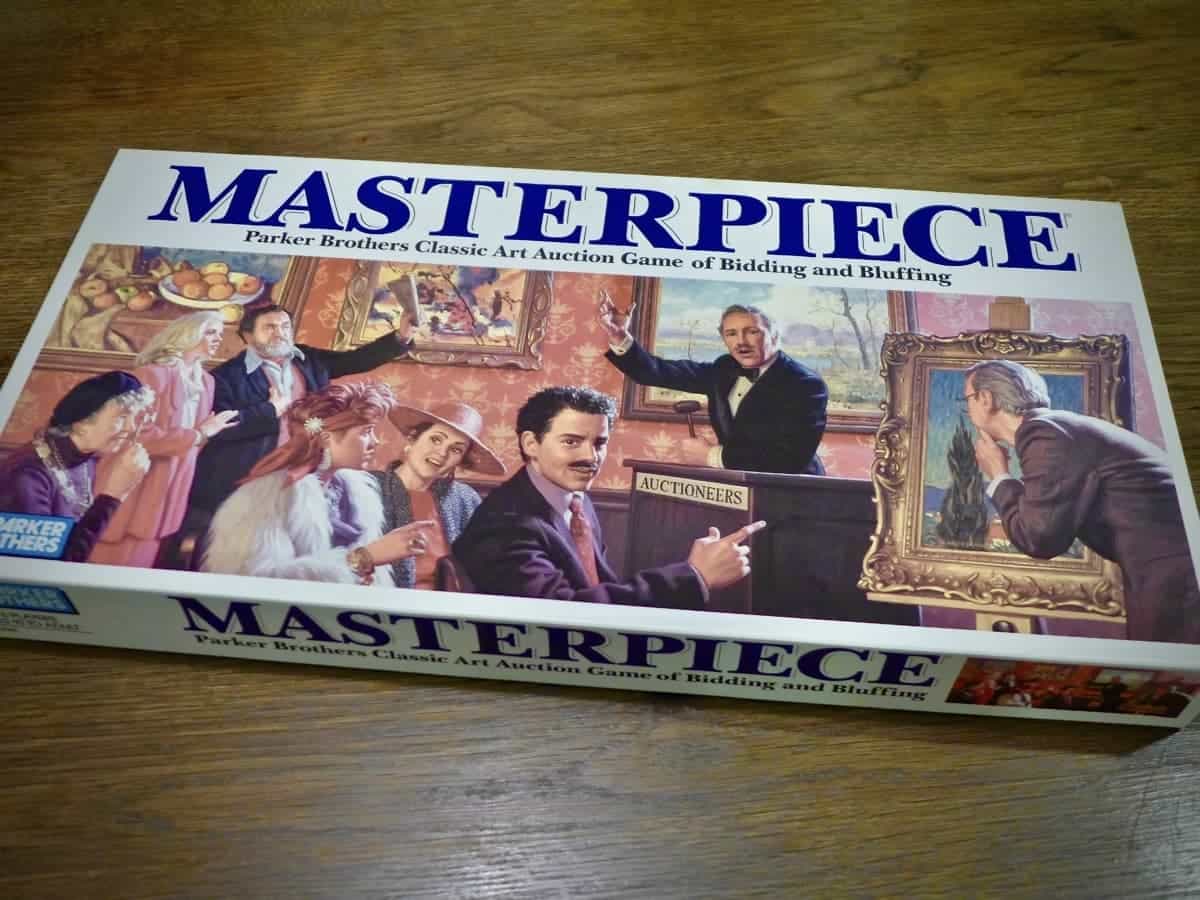
2. Guess The Artist: The Art Quiz Game

Think you’re an expert on famous artists and their ouevres? Test your knowledge and pit yourself against your friends in the gorgeous and very cool art trivia quiz game illustrated by Craig & Karl (the collaborative duo of Craig Redman and Karl Maier), Guess the Artist: The Art Quiz Game. The catch is that you’re only given three graphic clues with which to identify the artist. For example, a brick wall + a guy in hoodie + a British policeman holding a red balloon = Banksy. This one was easy enough, but some of the others were trickier and had me stumped! Would you have guessed Paul Cézanne from playing cards + a palette knife + a cylinder, a cone and an apple? I didn’t!
But since all the 60 artists featured are famous ones that most art-lovers would be familiar with and the visual clues are cleverly chosen, the game is just challenging enough to be fun, without being too difficult that you lose interest and give up.
Want to try your hand at a few? Here are four famous Asian artists that are featured in the game. The answers will be revealed further down on the page – no peeking now ..
1. 2.
2. 3.
3. 4.
4. Answers:
Answers:
1. Yayoi Kusama
2. Ai Weiwei
3. Katsushika Hokusai
4. Takashi Murakami
Did you get them all correct? Well done, you win the title of Art History Geek!
On the back of the flash cards are fun facts that make the game even more interesting – there are brief explanations of each of the visual clues as well as a “Did You Know?” section with bits of interesting trivia about the artist. It totally added to my enjoyment of the game. I give Guess the Artist a rating of 8/10. It’s widely available online, at Amazon and elsewhere, so you should be able to get your hands on one pretty easily.

3. Navin Rawanchaikul’s Lost in the City: The Game
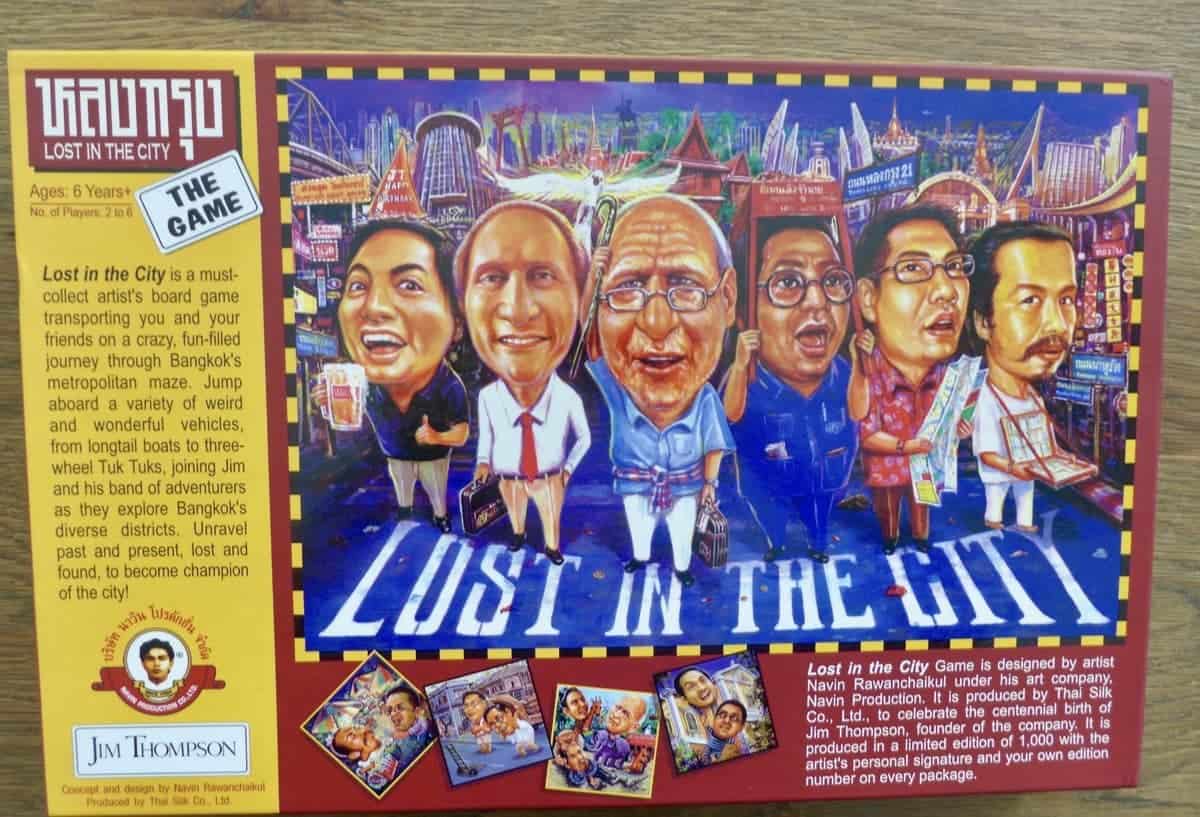
Last, but most certainly not least, we have our very own Southeast Asian art game, designed by Thai contemporary artist Navin Rawanchaikul, Lost in The City: The Game. It was created by the artist as part of a multifaceted showcase exhibition at the Jim Thompson House Museum, to celebrate the centenary of the birth of the the legendary Thai silk king, Jim Thompson. The exhibition, which ran from late 2006 to early 2007, included a site-specific street cafe/installation, puppet shows, a 4-volume comic book series, Lost in the City: The Return of Jim Thompson, as well as artworks by Navin, all celebrating the colourful life of the famous businessman whose mysterious disappearance over 50 years ago continues to intrigue many.
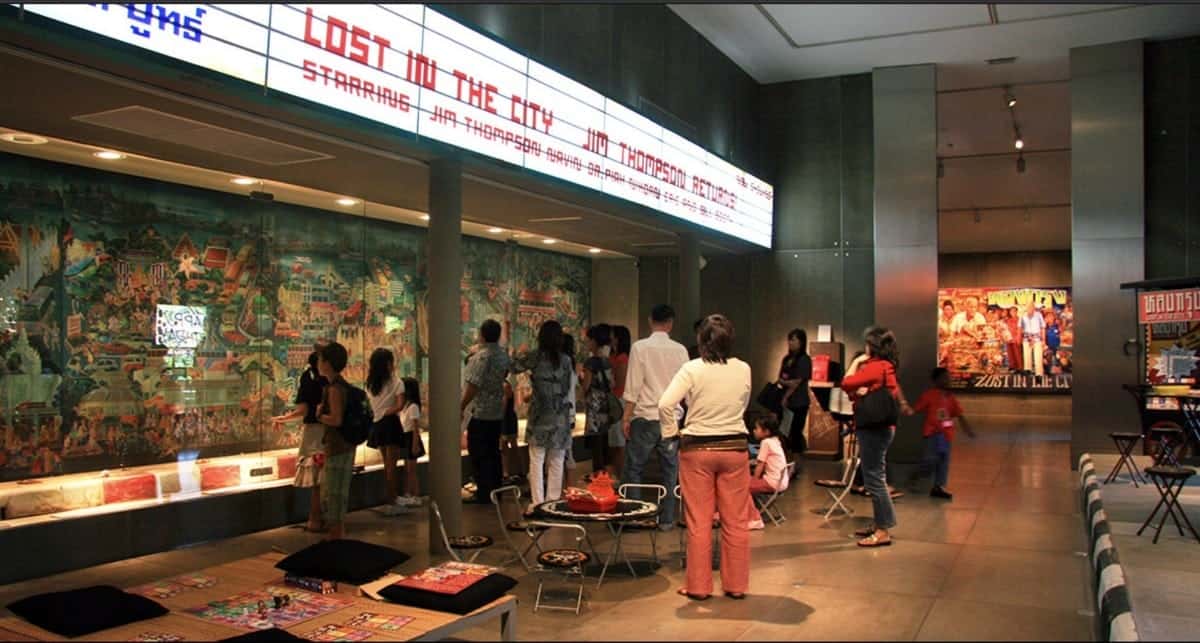
The game is a limited-edition series and only 1000 copies were produced for sale. Plural co-founder U is the proud owner of edition 0148/1000, signed by the artist himself, and graciously lent it to me to road-test for this article. Conceptualised and designed by Navin, it was produced by the Thai Silk Co. Ltd with great care and attention to detail and quality. Besides being a fully functional board game, it is also a keepsake work of art – I was careful to handle it gently so that I can return it to U in mint condition!
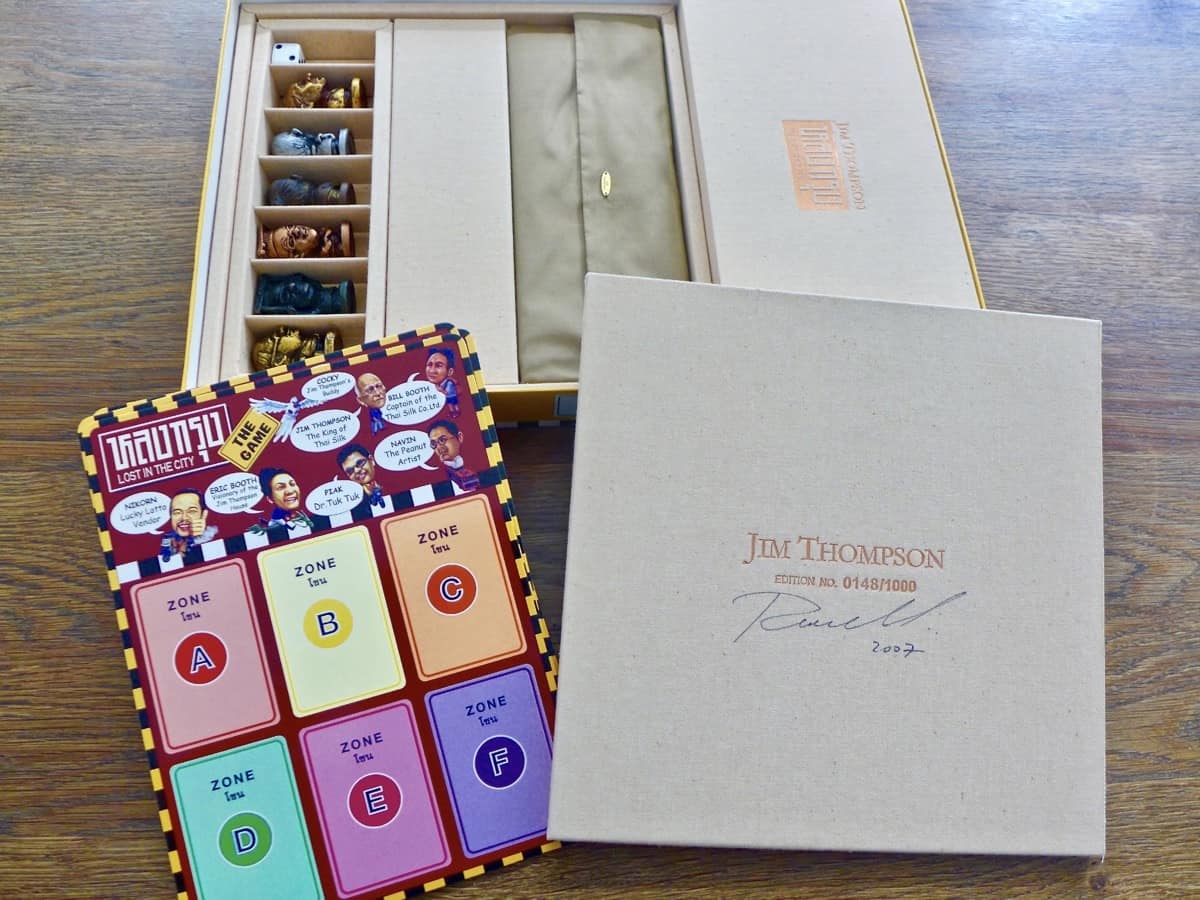 The game board, rendered in Navin’s vibrantly colourful signature aesthetic, is a map of the busy metropolis of Bangkok with recognisable landmarks like the Chatuchak Weekend Market, Wat Arun, the Giant Swing, as well as neighbourhoods like Sukhumvit and Thong Lor. Game-play follows the classic tradition – players take a token each and move around the board on the throw of a dice. The token pieces are realistically rendered characters who also appear in the Lost in The City comics series. They include the artist himself, as well as Jim Thompson and Bill and Eric Booth, the father and son duo who now run the Thai Silk Co. Ltd and Jim Thompson house. The object of the game is to travel around the board collecting Destination Zone cards from the 6 Destination Zones. Besides moving around the board on the throw of the dice, players may move even faster, leapfrogging over stop points by using various forms of transport like a tuk tuk or boat. Navin even gives a special role to Jim Thompson’s pet cockatoo, Cocky, who has magic powers and can fly players to any “Cocky’ point on the board.
The game board, rendered in Navin’s vibrantly colourful signature aesthetic, is a map of the busy metropolis of Bangkok with recognisable landmarks like the Chatuchak Weekend Market, Wat Arun, the Giant Swing, as well as neighbourhoods like Sukhumvit and Thong Lor. Game-play follows the classic tradition – players take a token each and move around the board on the throw of a dice. The token pieces are realistically rendered characters who also appear in the Lost in The City comics series. They include the artist himself, as well as Jim Thompson and Bill and Eric Booth, the father and son duo who now run the Thai Silk Co. Ltd and Jim Thompson house. The object of the game is to travel around the board collecting Destination Zone cards from the 6 Destination Zones. Besides moving around the board on the throw of the dice, players may move even faster, leapfrogging over stop points by using various forms of transport like a tuk tuk or boat. Navin even gives a special role to Jim Thompson’s pet cockatoo, Cocky, who has magic powers and can fly players to any “Cocky’ point on the board.
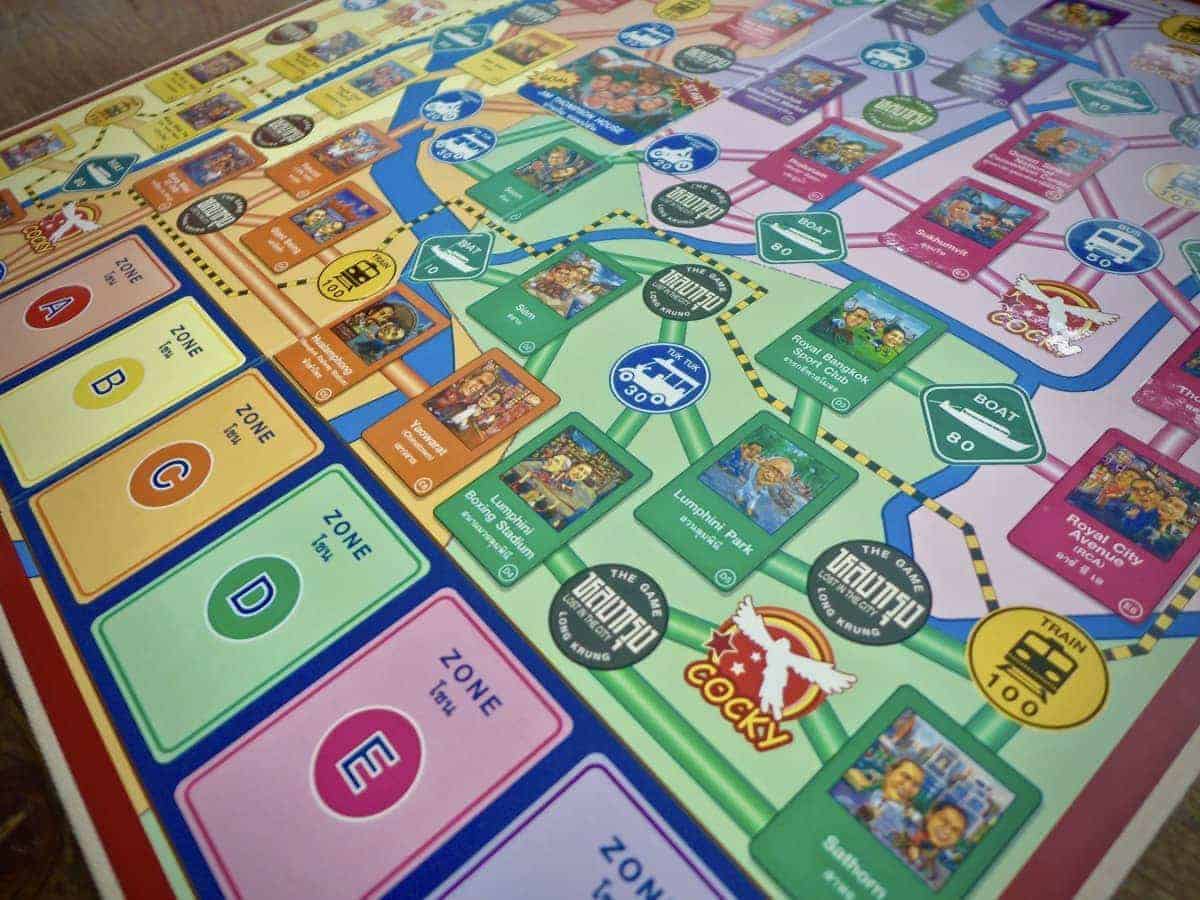
As a game, Lost in the City, is fun mainly because of Navin’s colourful and vibrant design, the backstory behind its conception and its association with the Jim Thompson legend, as well as its setting in the Southeast Asian city of Bangkok, with places and landmarks that are familiar to us. In terms of player satisfaction, however, it doesn’t really offer anything new or particularly challenging – its a basic move-around-a-board game, with some bells and whistles for added interest.
But then again, Lost in the City was never meant to be just a game. It is a part of artist Navin Rawanchaikul’s artistic practice in which he challenges conventional systems of artistic creation and presentation, driven by a desire to seek better ways to introduce art into the lives of everyday people. His dynamic art practice is characterised by his witty incorporation of elements from popular culture across a broad array of media, including performances, billboards, films, comics – and, in this case, a board game.

